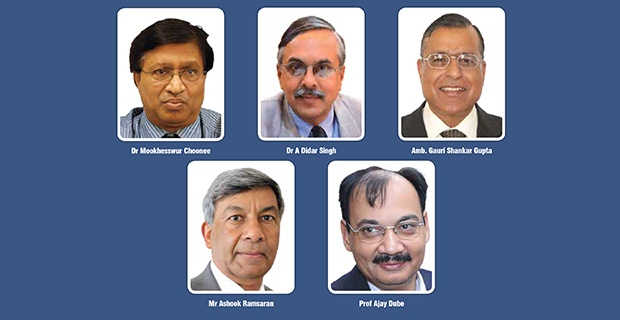ENGAGING INDIA’S YOUNG DIASPORA
When Jordachelin Lencil Moodley, an IT professional from South Africa, landed in New Delhi for the first time, he had, by his own admission, “preconceived misconceptions” about India, a country where his great, great grandfather was born. As a fourth-generation son of Indian soil and as a member of the Indian diaspora, the experience in India as a young participant of the 75th batch of Know India Programme (KIP) has been “truly life-changing”.
“I witnessed India in its glory as the world’s largest democracy, a testament to the sacrifices and vision of its freedom fighters. Visiting the Taj Mahal was a highlight for me as it is not only a majestic building with great history, but a symbol of eternal love,” Moodley says.
“As a technology enthusiast, the visit to MeiTY provided valuable insights into India’s technological landscape, progressive projects and future goals. At the UIDAI headquarters, I learnt about Aadhaar, India’s digital identity and its significant impact in bridging the digital divide. Working in the fintech industry, I resonated with projects like DigiLocker, mygov, UPI and India’s efforts to renew, repair and rebuild a nation that promotes financial inclusivity. This is evident in the rise of unicorns,” he adds.
The KIP has played a key role in shaping a positive view of India not only among the large Indian diaspora but also among the native people of the country of their domicile. India emulated one of the best practices of Israel (when a high committee set up in September 2000 under the chairmanship of L M Singhvi drafted the report on the Indian diaspora) and came up with the concept of the KIP. The objective was to expose, sensitise and educate Indian origin youth living abroad to every aspect of India. Over a period of two decades, 2,600 youth have participated in the programme. In July 2024 there were 39 young boys and girls from Fiji, Guyana, Malaysia, Mauritius, Myanmar, New Zealand, South Africa, Suriname and Trinidad and Tobago.
“At the KIP, we present them with a holistic view of India,” says Ankan Banerjee, Joint Secretary (Diaspora Engagement). “We have a brilliant diaspora. They play an important role in presenting India’s position, politically as well as economically. They drive India’s growth narrative abroad,” Banerjee says.
The young boys and girls who come for the programme return as ambassadors of their ancestral land, sharing the knowledge they have gained of India to the diaspora in their countries. In a way, the KIP serves as a bridge between India and the large and successful Indian origin people in various corners of the globe.
“India has faith in the diaspora; they are doing a great job. They are contributing to India’s GDP, they are an important wheel in our economy and they are identified with India,” Banerjee emphasises. Mentioning Google CEO Sundar Pichai and Microsoft CEO Satya Nadella, Banerjee says both are identified with India. There are an estimated 35 million Indian origin settled abroad including NRIs and PIOs. According to the Economic Survey 2023-24, India is the top remittance recipient country globally, with remittances reaching $120 billion in 2023. As of January 2024, it is estimated to be $125 billion.
Professor Ajay Dubey of the Jawaharlal Nehru University, who’d advised the L M Singhvi High Level Committee, says engaging the diaspora youth was one of the best practices in Israel, and India was inspired by this concept. “When the Indian identity in Indian diaspora youth is fading faster than the earlier generation, it is important to accelerate and redesign our engagement with them. A redesigned engagement with rising India will be more effective in connecting them with India.
“It is generally being felt that a redesigned KIP could be made more participatory. Through the new programme they could be made to feel that the Indian origin youth living abroad can make some difference in emerging India. They may get engaged in long term projects of three to six months wherein they adopt a village or do community service or work towards women’s emancipation, it will be more productive and have a long term effect,” he elaborates.











Comments.